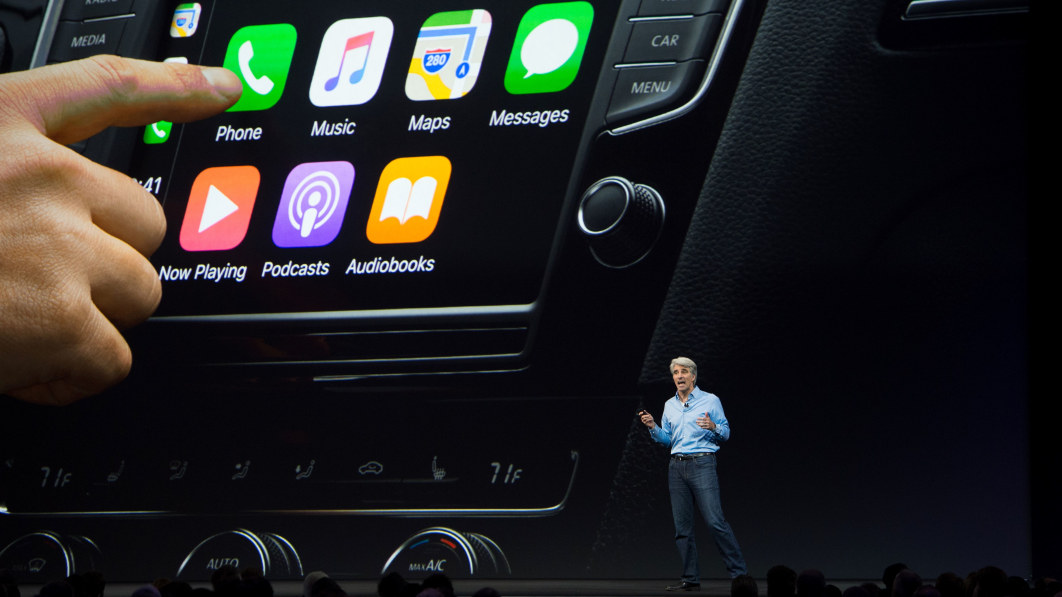Apple wants you to start buying gas directly from your car’s dashboard as early as this fall, when the latest version of its CarPlay software rolls out, speeding up the company’s move to turn your vehicle into a store for goods and services.
A new feature quietly unveiled at Apple’s developer conference this month allows CarPlay users to tap an app to navigate to a pump and buy gasoline directly from an in-car screen, without the usual process of entering or tapping a credit card. Details of Apple’s developer demo have not been previously reported.
But Dallas-based HF Sinclair, which sells its gasoline at 1,600 stations across the United States, told Reuters it plans to use the new CarPlay technology and will announce details in the coming months.
“We’re excited about the idea that consumers can navigate to a Sinclair station and purchase fuel from their vehicle’s navigation screen,” said Jack Barger, the company’s senior vice president of marketing.
Fuel apps are just the latest in Apple’s continued push to make it possible to tap the navigation screen to buy. It has already opened up CarPlay to apps for parking, electric vehicle charging and food ordering, as well as adding driving task apps such as mileage tracking on business trips.
Fuel is a major expense for car owners. The U.S. Energy Information Administration estimated in April that the average U.S. household will spend about $2,945 on gasoline in 2022, or about $455 more than last year.
Apple does not currently charge car manufacturers, developers or users for CarPlay; the business interest puts Apple at the forefront as cars turn into moving computers, said Horace Dediu, an analyst at Asymco and founder of Micromobility Industries. The new feature will hit hundreds of car models already compatible with CarPlay when Apple releases software updates this fall.
“Forget Apple Car – Apple CarPlay is a bigger deal,” Dediu said. “It’s very likely to scale to millions and millions of cars, if not hundreds of millions.”
To use the new CarPlay feature this fall, iPhone users will need to download a fuel company’s app to their phone and enter payment information to set up the app. Once the app is set up, users can tap their navigation screen to activate and pay for a pump.
“It’s a huge market and consumers really want to take friction out of payments,” said Donald Frieden, chief executive officer of Houston-based P97 Networks, which makes the digital plumbing that many fuel companies will use to connect their apps to cars.
Frieden said he’s been getting calls from oil companies interested in making their apps work with CarPlay. BP, Shell and Chevron Corp. did not respond to requests for comment about whether they plan to make their iPhone apps work with CarPlay.
FAILED ATTEMPTS
Apple’s latest move is likely to heighten tensions with automakers who have their own ambitions for auto trading.
For example, car manufacturers have tried – and failed – to make buying gasoline from the car more popular before. General Motors rolled out a system for this in 2017, but shut it down earlier this year “due to a supplier leaving the company,” GM told Reuters in a statement.
In addition to apps for fuel and other purchases, Apple CarPlay is also looking to expand further into the car’s driving systems by accessing speed and fuel gauge data.
But automakers aren’t likely to hand that data over to Apple without making their own demands in talks analysts say are likely already underway.
Speaking at the Reuters Automotive Europe conference in Munich on Wednesday, Mercedes Benz CEO Ola Kaellenius said the company’s goal “is to have a complete, holistic Mercedes experience”.
Kallenius said Mercedes would not try to reinvent every category of apps, but that “we would be very careful when interacting with companies in this digital domain…anything and everything that is relevant to product liability.”
Related video:
